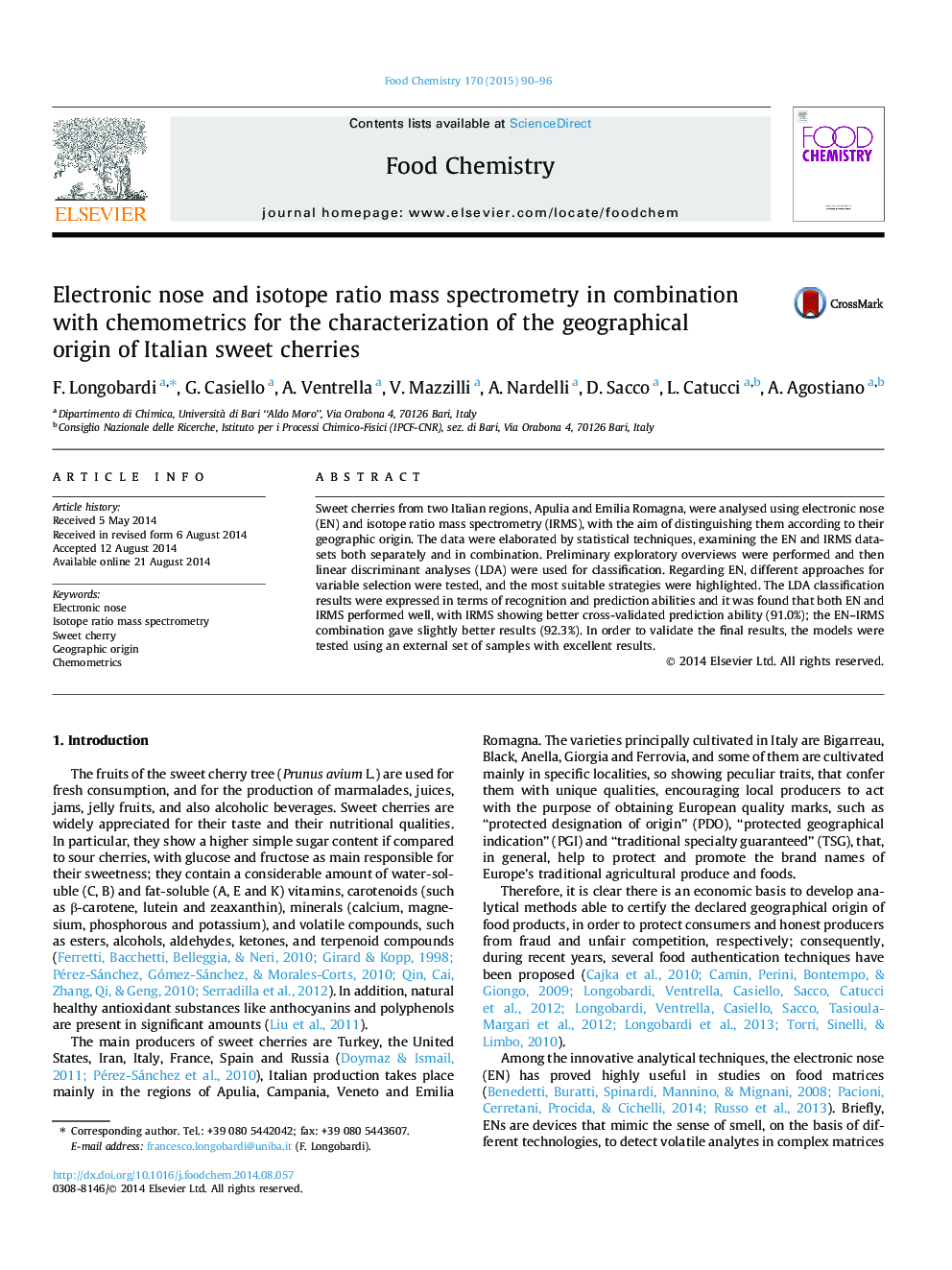| Article ID | Journal | Published Year | Pages | File Type |
|---|---|---|---|---|
| 1185551 | Food Chemistry | 2015 | 7 Pages |
•Geographic origin of sweet cherries was discriminated.•Different strategies for electronic nose variable reduction were tested.•Isotope ratio mass spectrometry gave the best model performances.•External validation was carried out on the statistical models.
Sweet cherries from two Italian regions, Apulia and Emilia Romagna, were analysed using electronic nose (EN) and isotope ratio mass spectrometry (IRMS), with the aim of distinguishing them according to their geographic origin. The data were elaborated by statistical techniques, examining the EN and IRMS datasets both separately and in combination. Preliminary exploratory overviews were performed and then linear discriminant analyses (LDA) were used for classification. Regarding EN, different approaches for variable selection were tested, and the most suitable strategies were highlighted. The LDA classification results were expressed in terms of recognition and prediction abilities and it was found that both EN and IRMS performed well, with IRMS showing better cross-validated prediction ability (91.0%); the EN–IRMS combination gave slightly better results (92.3%). In order to validate the final results, the models were tested using an external set of samples with excellent results.
